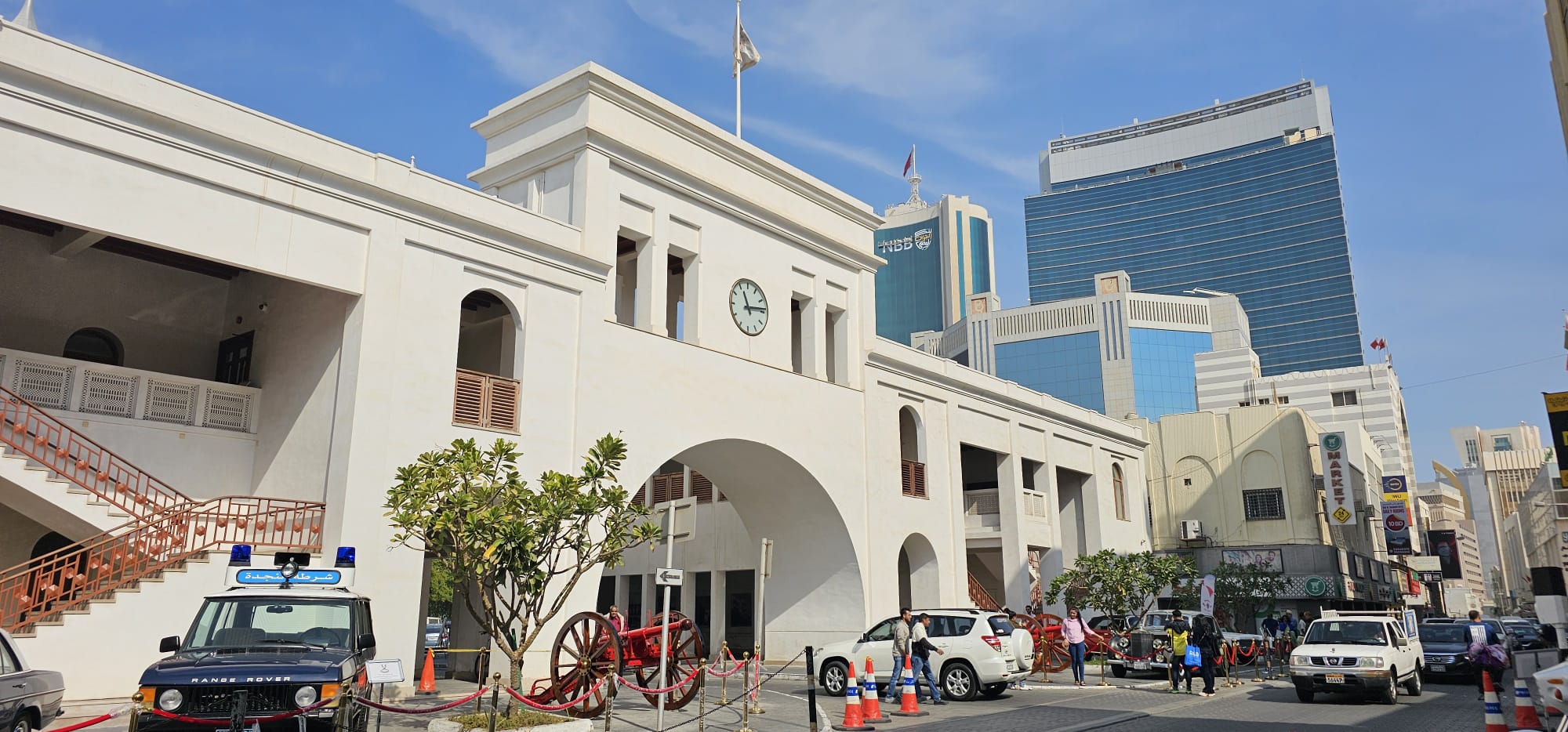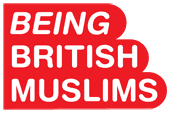An invitation to a wedding in Bahrain, especially one for my wife’s niece, was always going to be special. And it certainly was. Around 67 family members from the bride’s side descended upon The Meridien, a hotel in central Bahrain, for the 2024 Christmas holiday. We came from all over, New York, Toronto, Pennsylvania, Texas, London, Bangladesh, and beyond. The bride’s family, British-Bangladeshi-Bahraini nationals, have called Bahrain home for over 25 years.
My family arrived on December 25th, planning to stay until January 2nd. While the trip was, first and foremost, about family, laughter, catching up, feasting, and celebrating the beautifully arranged wedding events, it was also an opportunity for me to finally see Bahrain. Before this, Bahrain had never been on my list of must-visit places. For years, I had found plenty of (good) excuses not to go. It’s not exactly a hotspot for culture-seekers like me. So, what did I make of it?
Bahrain: The Country
Bahrain is an island nation in the Arabian Gulf, connected to Saudi Arabia by a long causeway near Dammam, one of Saudi’s major industrial cities. The country has a population of about 1.5 million, nearly half of whom are expats from India, the Philippines, Bangladesh, Pakistan, and elsewhere. Many of these expats have lived here for decades, yet residency length, birth, or even marriage do not guarantee citizenship. Naturalisation is not a right but rather a privilege granted at the government’s discretion. The ruling Al-Khalifa family, led by King Hamad bin Isa Al-Khalifa, has its presence felt throughout the country, his image is draped prominently in public spaces.
Bahrain gained independence from the United Kingdom on August 15, 1971. Before that, Bahrain was a British protectorate for over 100 years, from 1861.
Bahrain consists of multiple small islands, most of which are uninhabited. The largest island is home to the capital, Manama, where half of the landscape is desert and the rest is a modern urban city. The entire island is compact. It’s only about 10 km wide and 40 km from north to south. It is well-developed, boasting sleek skyscrapers, well-maintained public spaces, excellent roads, and an impressive level of cleanliness. Overall, unlike other places in the Gulf Peninsula (e.g. Dubai), Bahrain maintains a more laid-back charm and strong sense of community, and it doesn’t feel overwhelmingly commercialised.
We visited shortly after Bahrain National Day, which is celebrated every year on December 16th to mark the ascension of Bahrain’s first king, Isa bin Salman Al Khalifa, to the throne in 1961. As a result, the city of Manama was beautifully adorned with vibrant red and white lights, creating a festive atmosphere throughout the streets. We also got to see the New Years’s celebrations, with fireworks across the city. The roads were gridlocked and viewing sites full with people. Whilst the fireworks was not as spectacular as London’s, the bustling market and food stalls more than made up for it.
There are many stunning views of the coast all across Bahrain. Taking a boat trip is a useful way to see them, which we did. Some of the hotels are also located in stunning beach resorts.
Getting around the country requires a car. Public transport is very limited. In fact we did not see any during our stay. Ride-hailing apps like Uber and Careem operate throughout Bahrain, though Careem is much more restricted to urbanised areas. I still get WhatsApp messages from “Sarwar Taxi – Bahrain” reminding me to order one of their 973 taxis! Taxi drivers are welcoming and services are tightly regulated, so the taxis are very clean and you can expect a professional service.
Food, like all Gulf countries is plentiful. The major fast food chains like Al-Baik, McDonalds, Nando’s, can all be found in Bahrain. Traditional Bahraini food is also worth a try, but given Bahrain’s cosmopolitan nature with such large expat communities, food from many other part of the world can be readily found or cooked by maids. We were fortunate with our wedding hosts taking exceptional care of us, taking us out to restaurants and their homes for delicious meals, including Hilsa fish (“Eeleesh mass”).
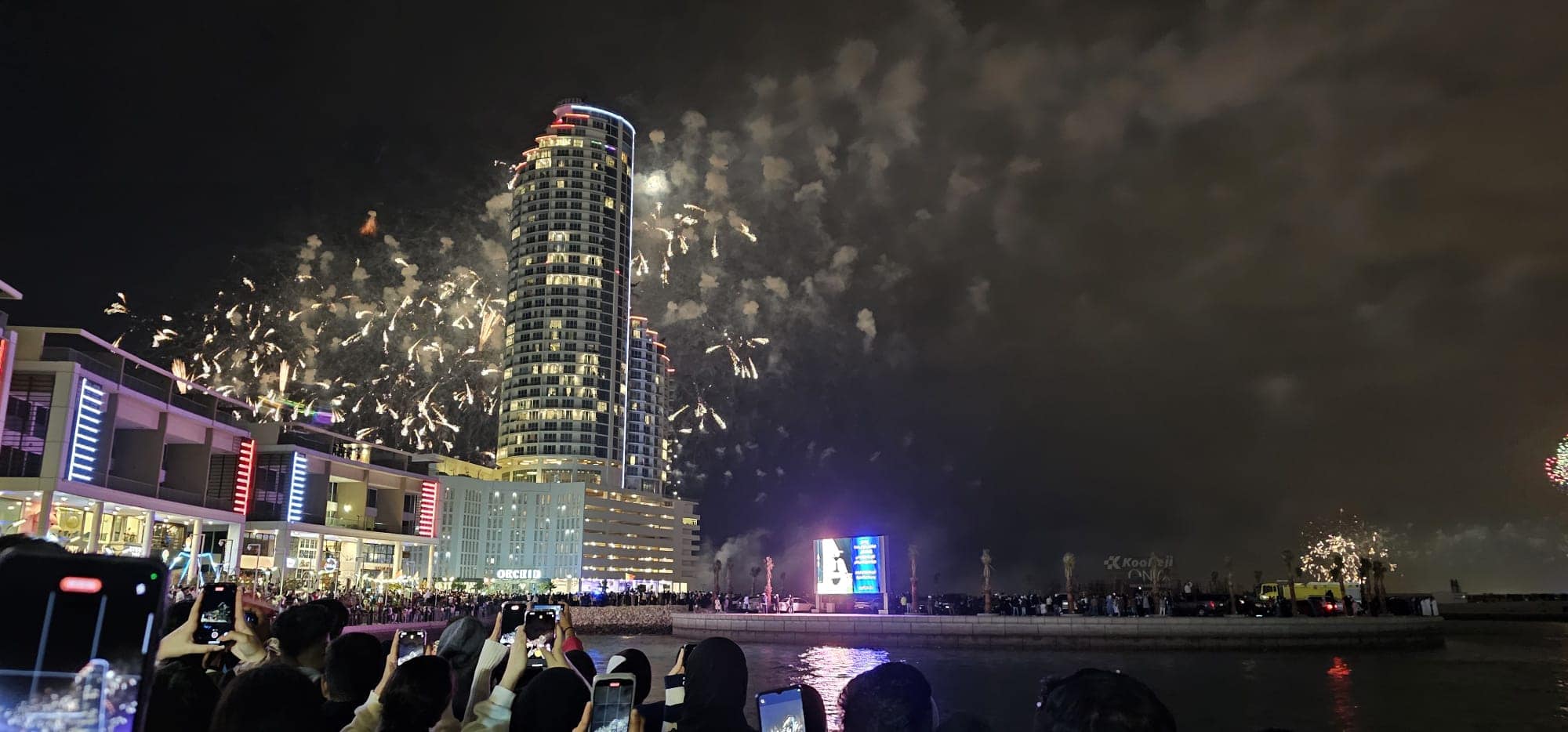
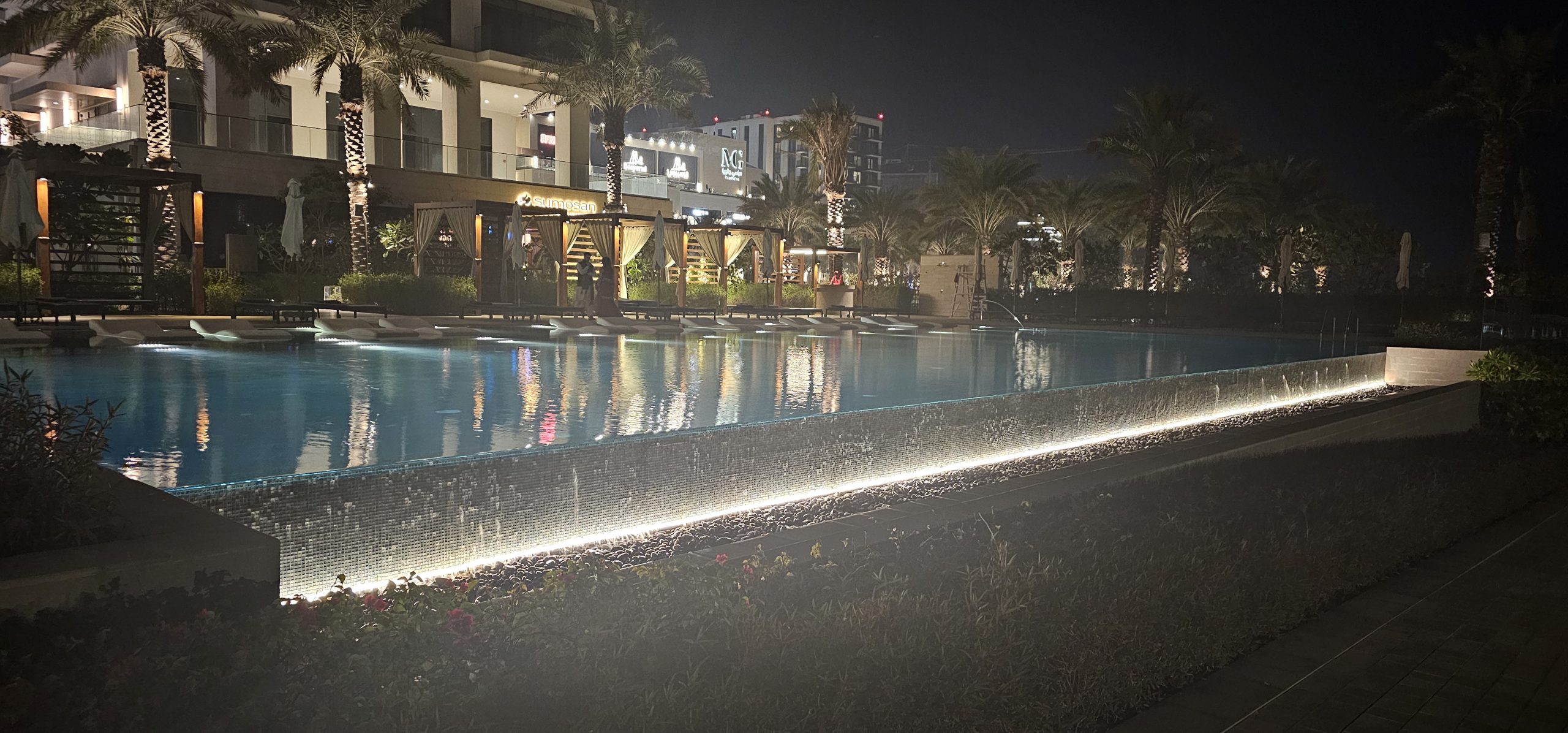
Brief Islamic history
Bahrain was one of the first regions in the Arabian Peninsula to embrace Islam. It is believed that the region converted to Islam during the lifetime of the Prophet. In 628, the Prophet sent a letter to the rulers of Bahrain, inviting them to accept Islam. The ruler at the time, Al-Mundhir ibn Sawa, who was a Persian governor, appointed by the Sassanian Empire, accepted the message and converted to Islam, along with many of his people. The Sassanian Empire eventually ended in 651. Imam Al-Tabari covers this in his famous book History of the Prophets and Kings (Tarikh al-Rusul wa al-Muluk). But while Persian rule in Bahrain and, later, to the east in places like modern-day Iran, came to an end, the expansion of Islam, as seen throughout history when Islam touched new cultures, it did not erase Persian influence. Instead, it sparked a renaissance in Persian culture, art, and science, enriching the Islamic world in profound ways.
During the Abbasid period (750-1258 CE), the island was home to Shia scholars and became an important centre for Shiite theology. The Shi’a Muslim population in Bahrain grew significantly and, among the native Bahraini population, to this today, remains the dominant religious group in the country. However, the ruling elite and many of the main mosques are Sunni-led. Moreover, most expats are Sunni from India, Egypt, Pakistan, Jordan, Bangladesh etc. With the expats, the Sunni-Shia split is thought to be roughly equal. Generally, sectarian tension is considered to be quite rare. Though this was not always the case.
One of the most significant and controversial movements in Bahrain’s Islamic history was the rise of the Qarmatians in the 9th century. Not to be confused with the historical Sunni sect known as the Karramiyyah (the “anti-rationalists”), the Qarmatians were an Ismaili Shia sect, and they became influential in Bahrain. They are most famous for their sacking of Makkah in 930, during the Hajj pilgrimage, when they seized the Black Stone (Hajar al-Aswad) from the Ka’ba and took it back to Bahrain. This was a monumental event that shocked the Islamic world and heightened tension between Shia and Sunni Muslims. The stone was returned 22 years later.
We often forget that such monumental events did happen in the past, but being aware of them might perhaps help us cope better with events in our time!
The Climate
Unsurprisingly, Bahrain has an arid climate. Winters are mild, with daytime temperatures in the low 20°C’s, while summers soar into the unbearably high 40°C’s. December, being winter, made for an especially pleasant visit. Day and night temperatures remained stable during our stay at around 20°C.
Despite the harsh climate, Bahrain has managed to cultivate an extensive irrigation system, seemingly engaged in an ongoing battle to sustain patches of greenery. The sight of manicured grass, thriving palm trees, and lush green spaces, against the odds, was impressive.
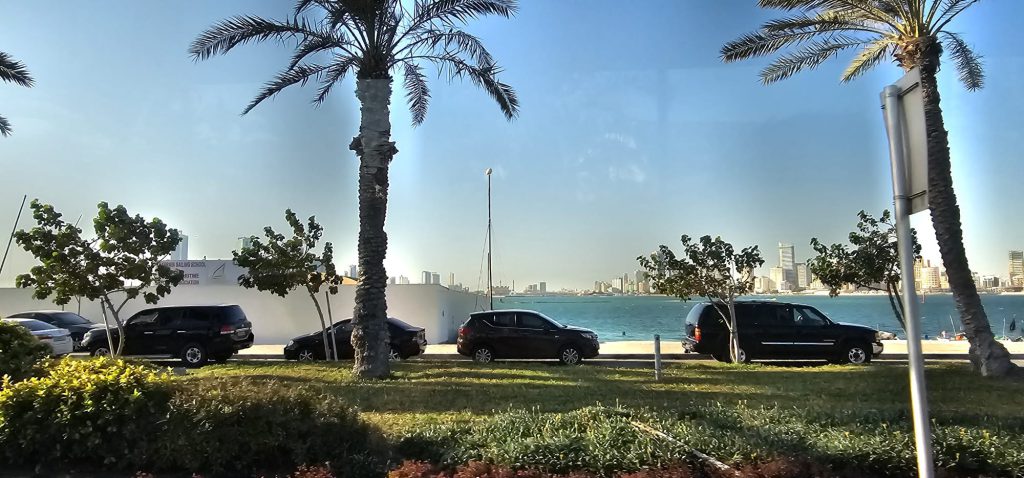
However, the arid conditions reminded how much I loved the evergreen landscape of the British Isles. Water, trees, greenery, wildlife – as Wordsworth famously wrote about in Guide to the Lakes, 1810:
“I travelled among unknown men, in lands beyond the sea; and yet, for all my wanderings, the green vales and the hedgerows of England have ever been dear to me. There is a sweetness in the air, a softness in the light, and a quietness in the fields that no other place can match. The hills rise gently, not in the wild majesty of foreign mountains, but in a way that soothes the soul, as if nature herself had shaped them for peace. The streams move with a murmuring grace, their waters clear as the morning sky, while the woods, standing ancient and still, seem to whisper of times long past. England, with her pastoral beauty, is not merely a place, but a feeling, a presence that lingers in the heart long after one has left her shores.”
That said there was plenty to satiate me.
The Beit al-Qur’an museum
This was my favourite place. The museum is dedicated to the Qur’an and has many ancient Qur’an folios and mushaf’s, in some cases, with fragments reportedly dating back to the 7th and 8th centuries. The museum had manuscripts from, perhaps, every era. There was at least one example of a fragment of the Qur’an that did not have nay diacritical marks, suggesting that it before the development of Kufic scripts by the mid-to-late 7th century. This would have been the script that was round at the time of the Prophet.
I also loved seeing the wide range of Qur’an translations on display. Including among them was a Latin translation from 1543 and the first printed copy of the Qur’an, produced in Germany in 169.
However, this serves as a stark reminder of how Muslim civilisation struggled to adapt to modernity. The first officially printed Qur’an in the Islamic world was produced by Ibrahim Muteferrika (1674–1745), a Hungarian-born Ottoman official, in 1775, which is some 81 years after the German printed copy. Prior to this, Ottoman scholars rejected printing the Qur’an on the basis that they considered Qur’anic writing had be written devotionally to preserve or honour its scaredness. Of course we know this did not have any basis in Islamic thought but, it does show the strength of ritualism by the late stage of the classical Ottoman period.
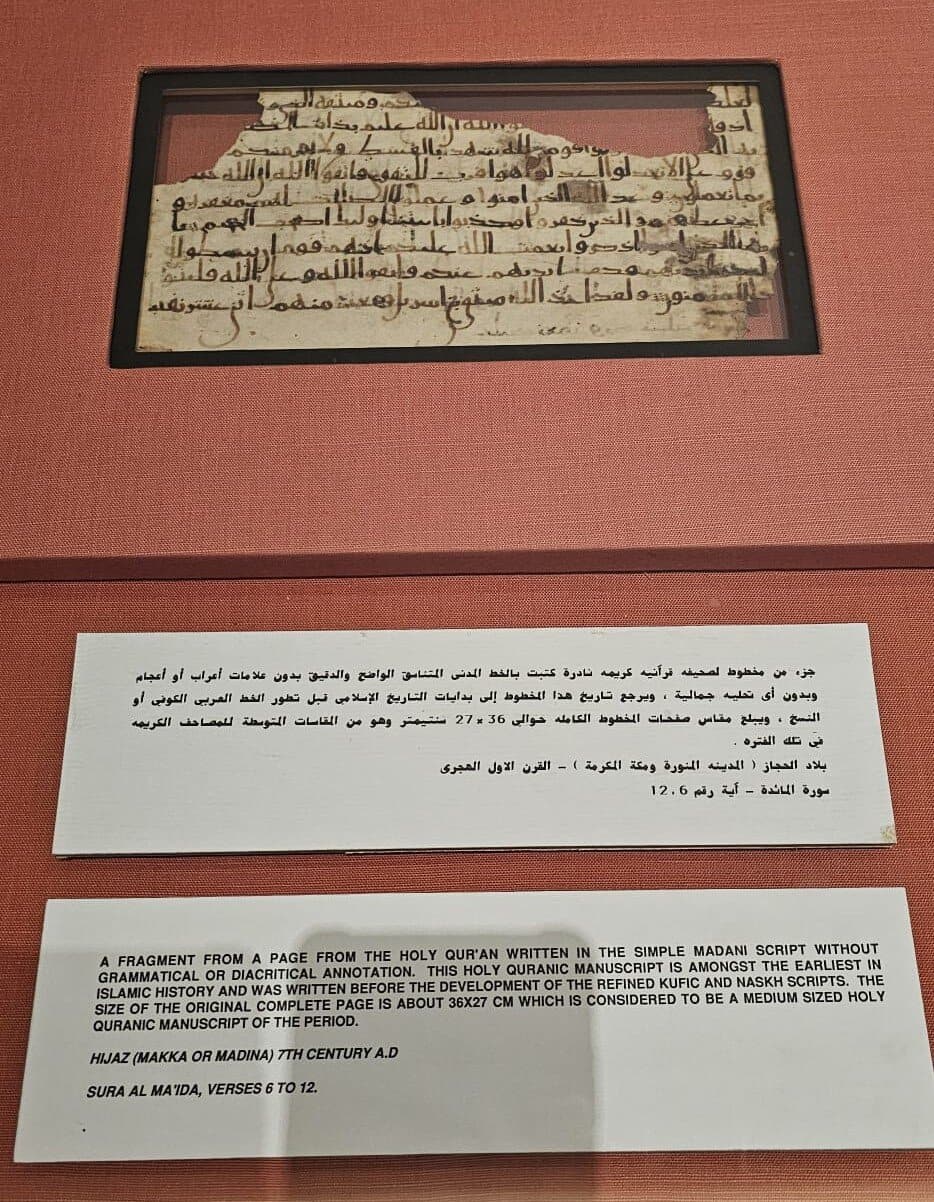
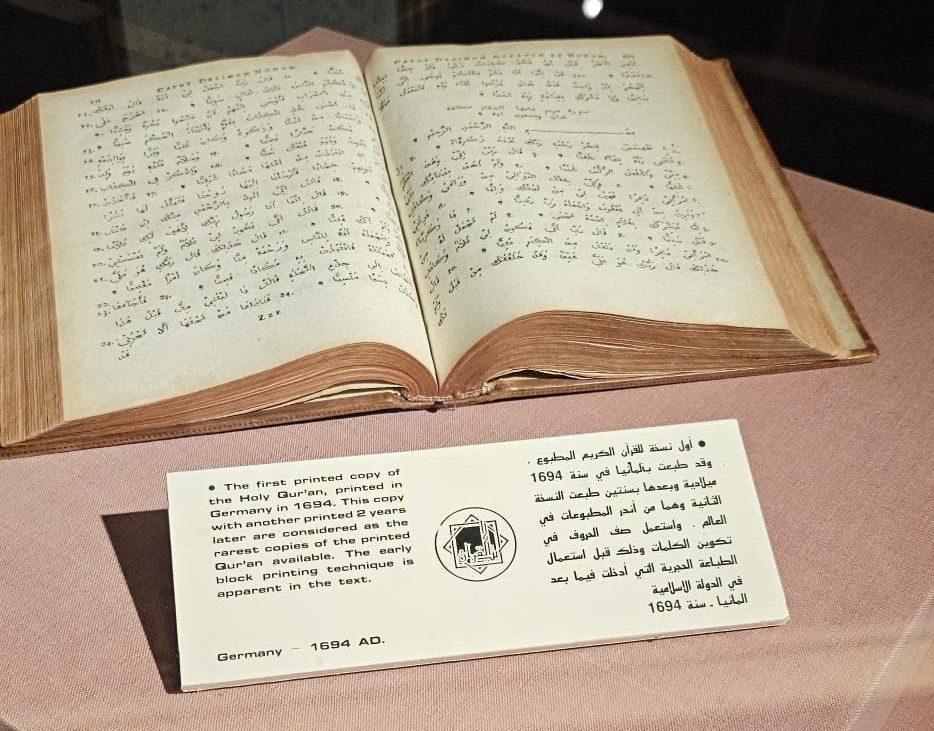
The “Tree of Life”
Someone traveling from the UK to an arid land like Bahrain might think it a bit odd to visit a tree. But then again, this isn’t just any tree. The Tree of Life” as it’s colloquially called in Bahrain is a famous and intriguing natural landmark located, literally, in the middle of the desert of Bahrain. The exact age isn’t known, but it is thought to be over 400 years old. How it has been able to withstand the harsh desert environment for so long is incredible.
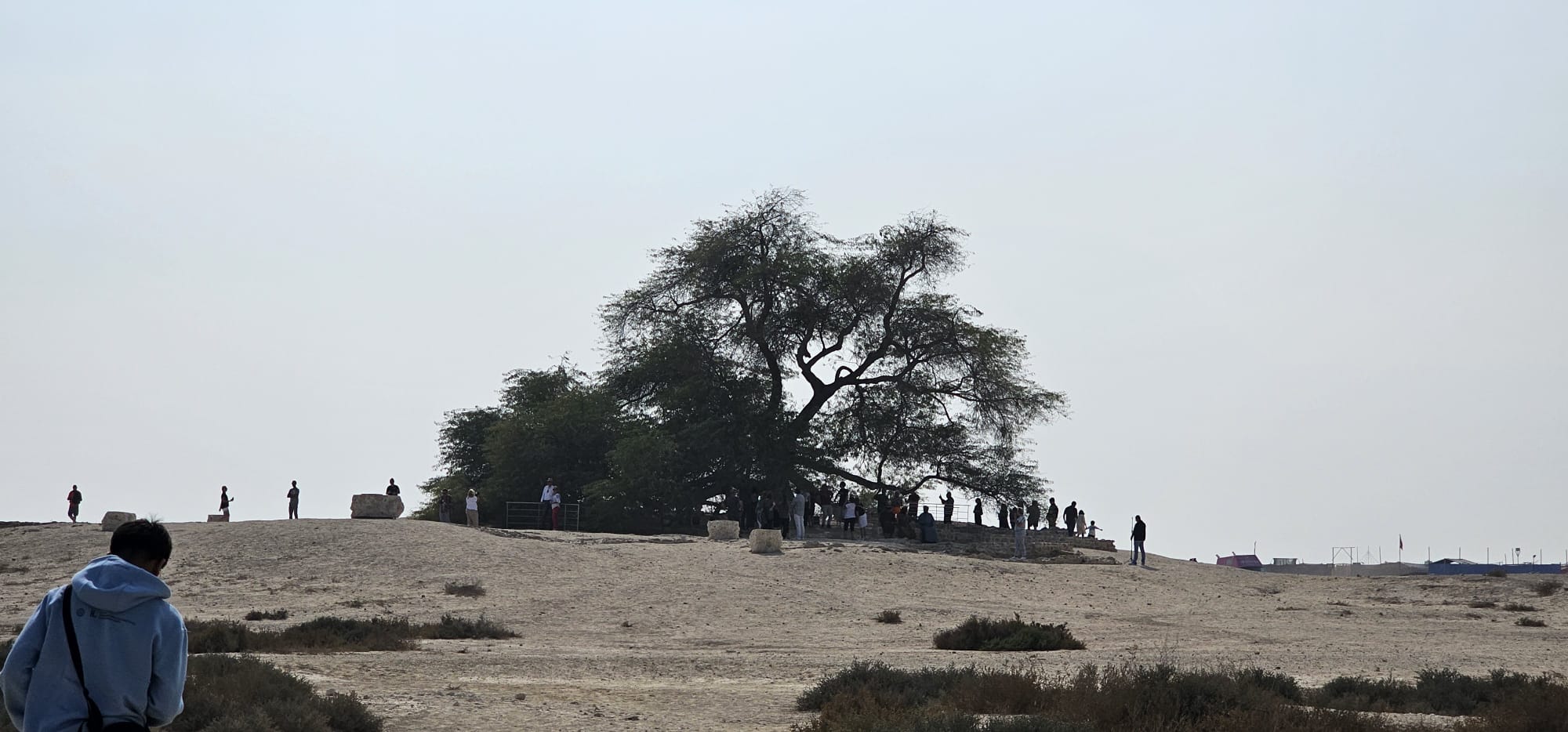
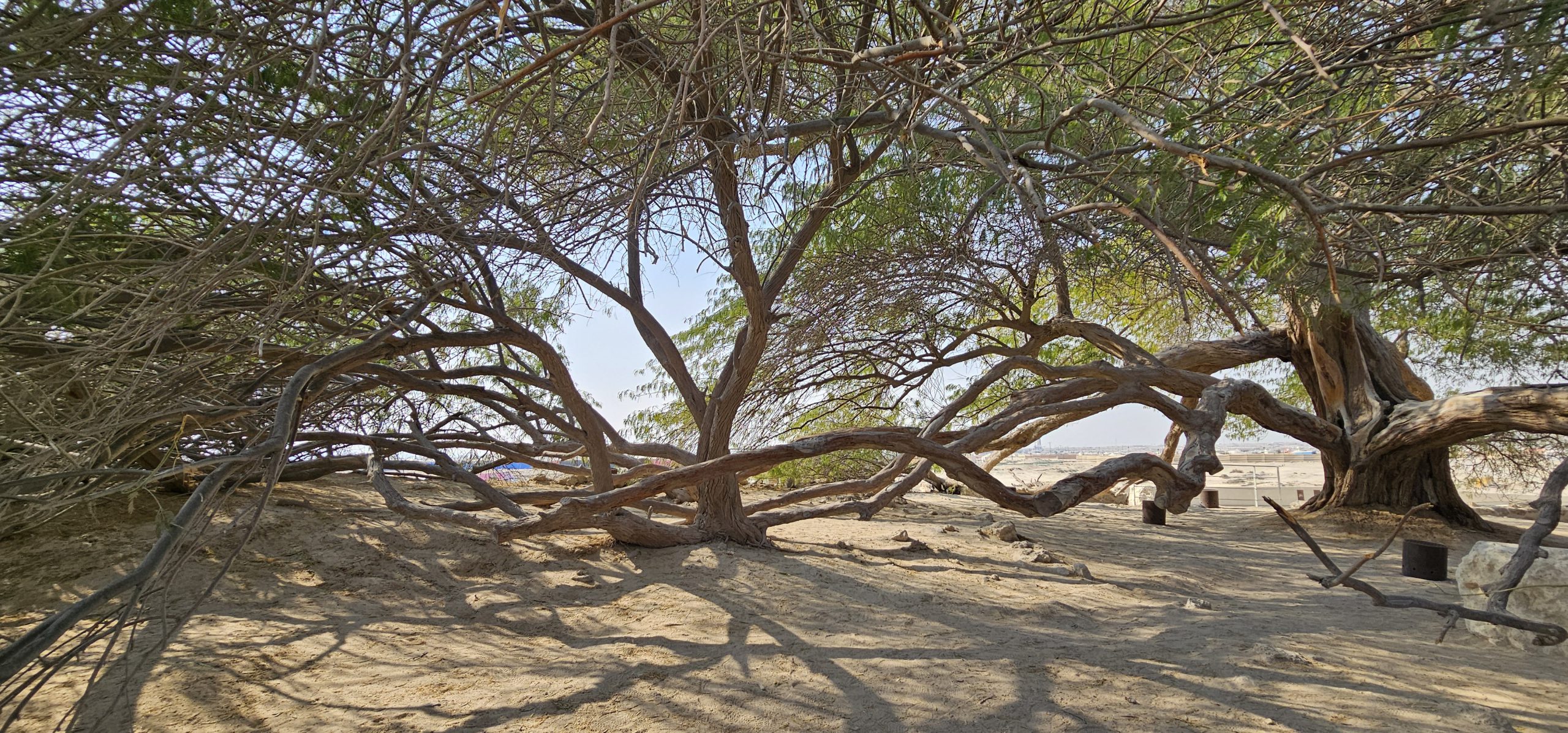
Al-Areen Wildlife Park & Reserve
I found this park and zoo to be exceedingly accessible and relaxing. They packed it with many animals, such as the Arabian onyx, gazelle, ostrich, a variety of birds etc. It also had a very family-friendly settings, and horse and camel rides, which are great for kids. One of the best zoos I have ever been to.
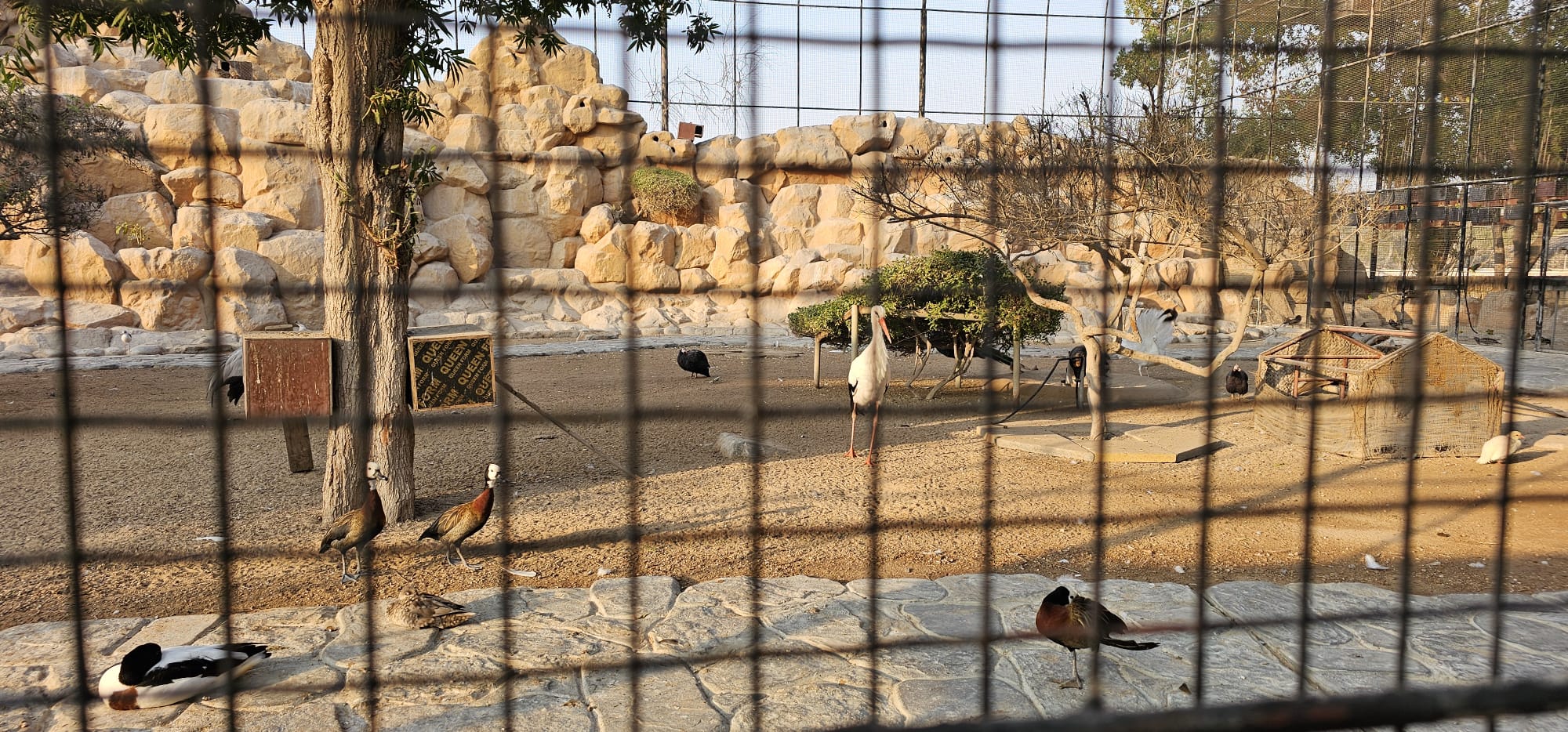
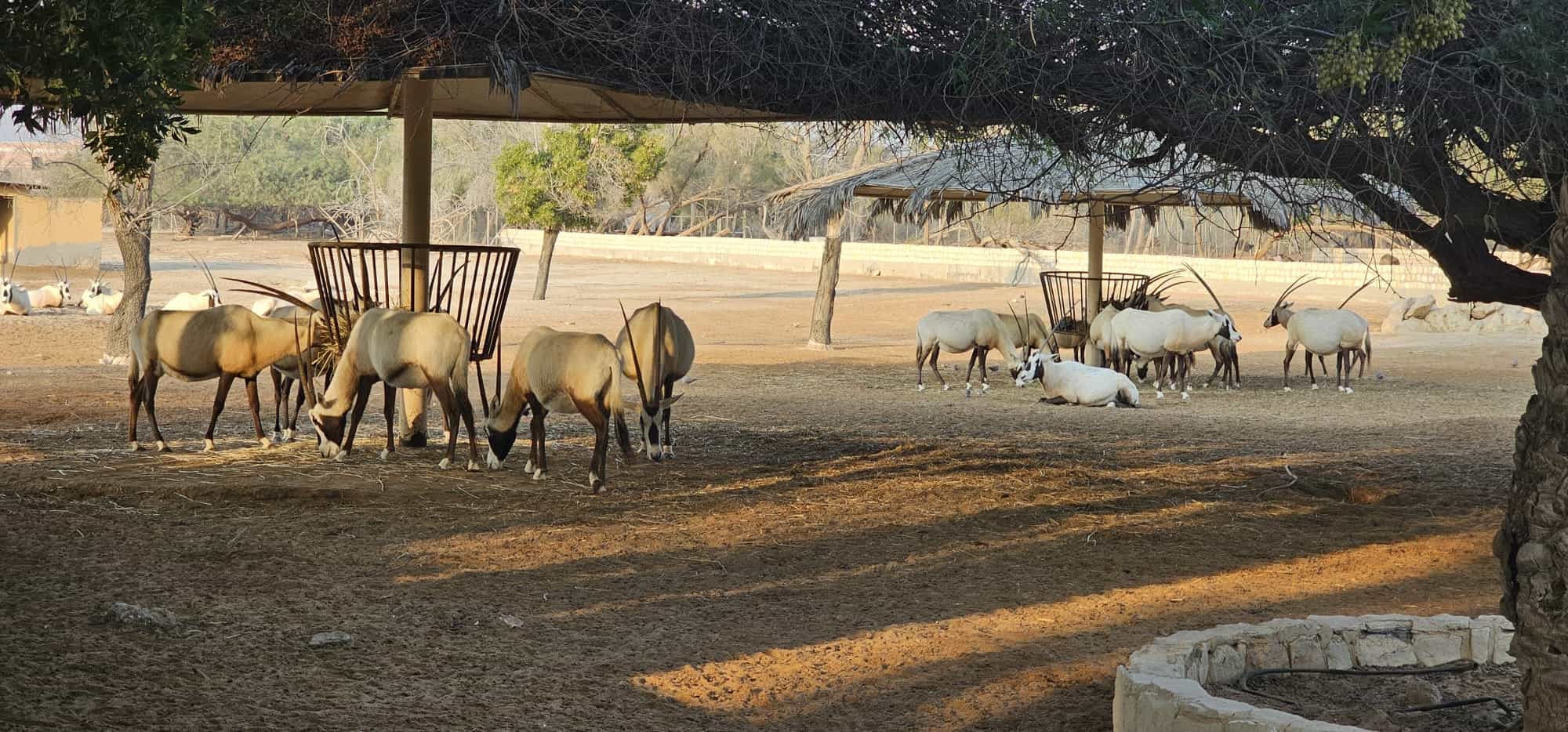
Bahrain National Museum
This is wonderful museum that provides a comprehensive overview of Bahrain’s history, culture and heritage. A real treasure trove of artifacts and exhibits, replica models, that provide thorough exploration of Bahrain’s ancient civilisations, Islamic heritage, traditional life, and contemporary art. I learnt the important of pearl diving through the museum’s collection of pearling artifacts, once a global leader in the pearl industry.
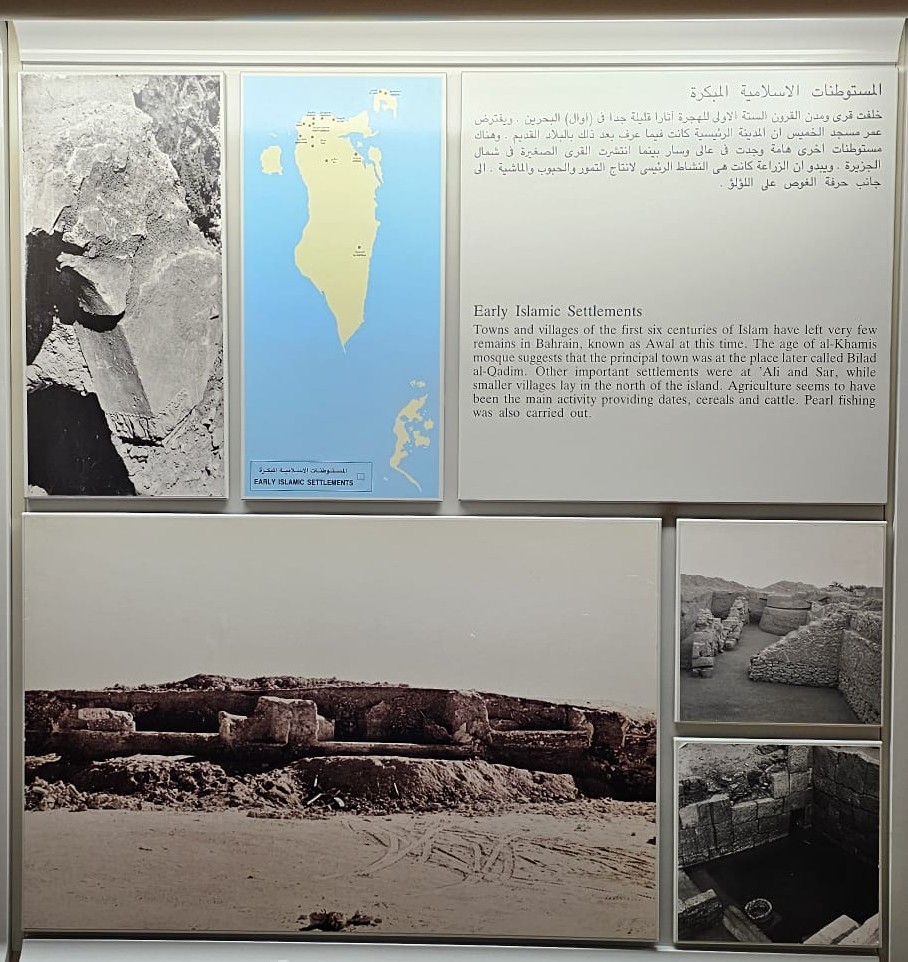
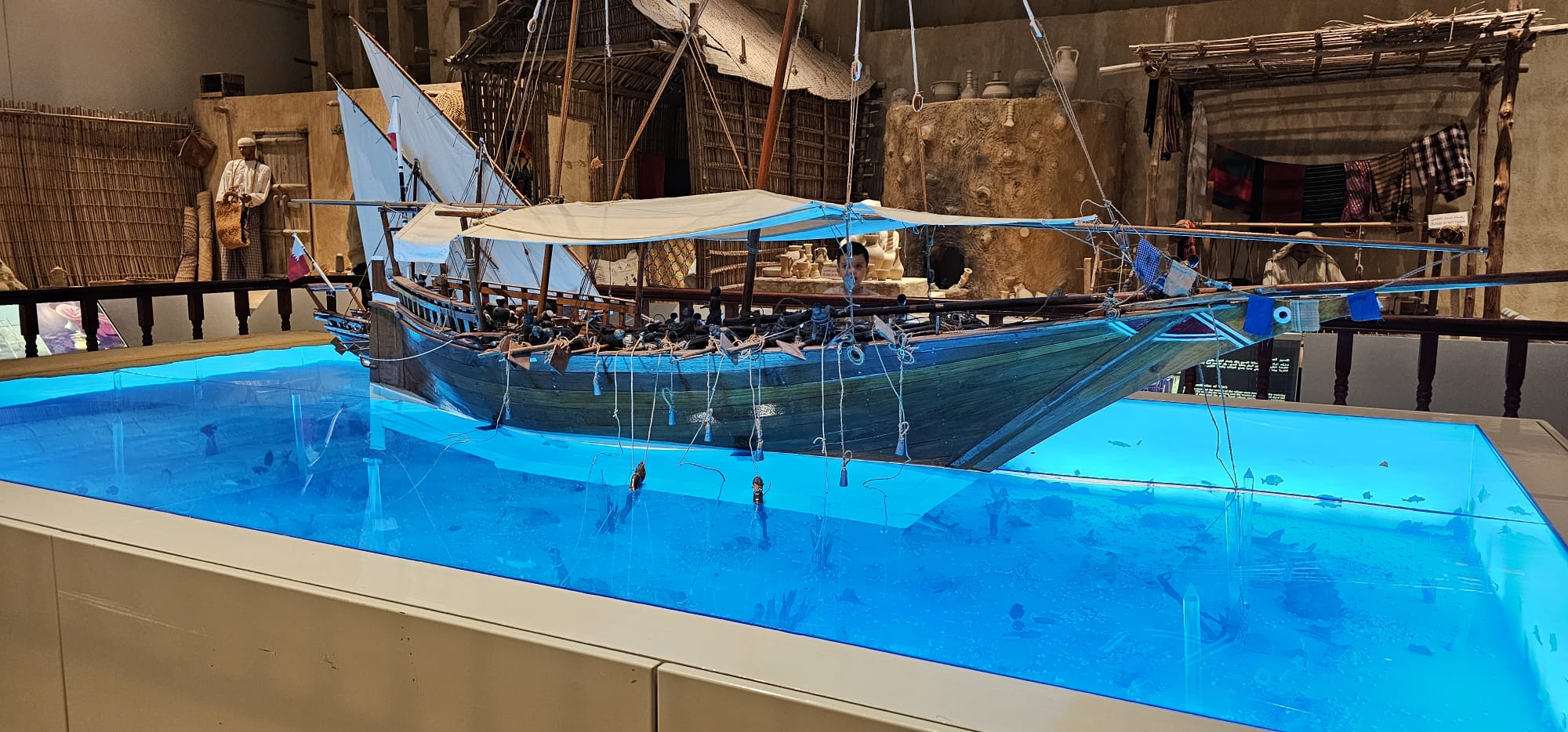
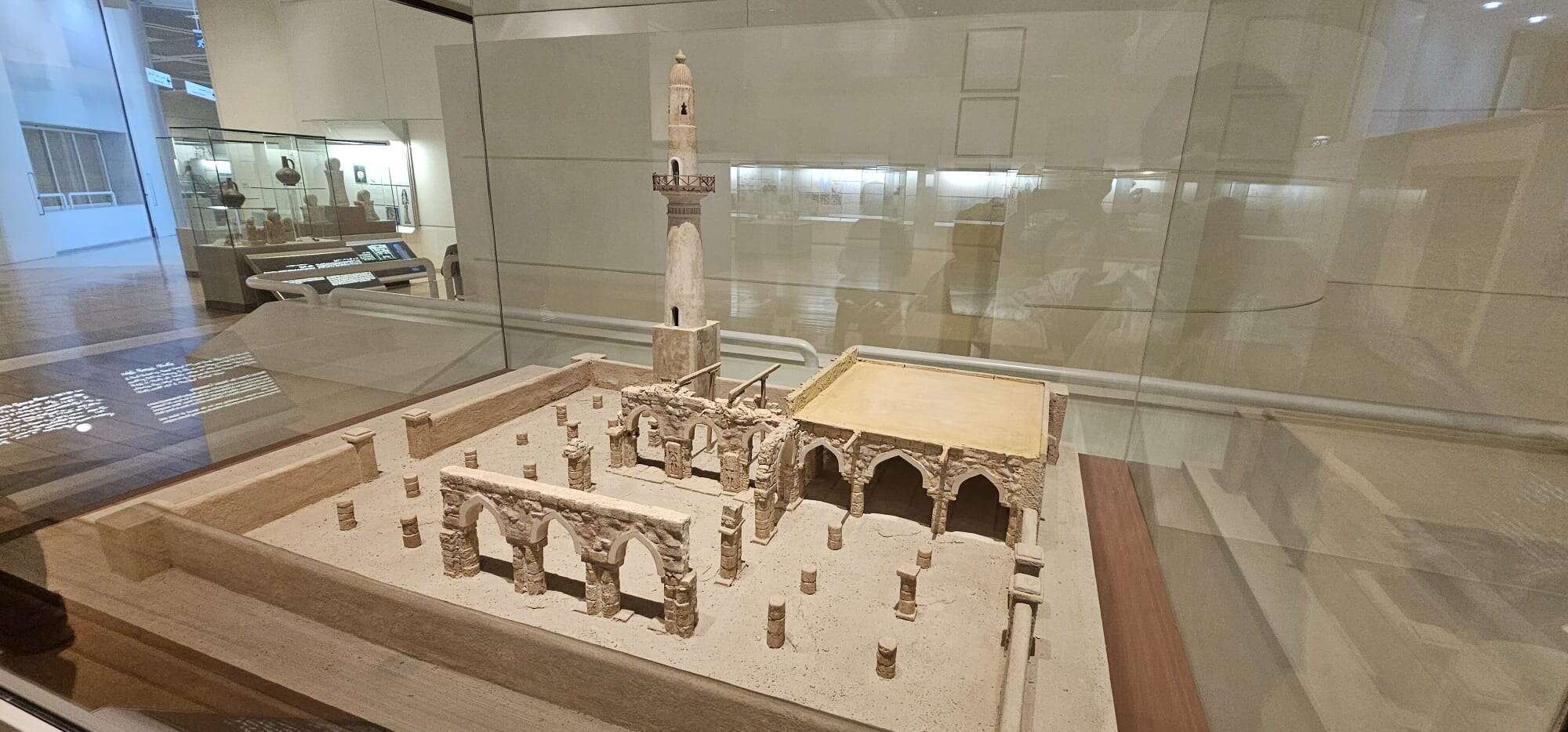
Dolphin Resort
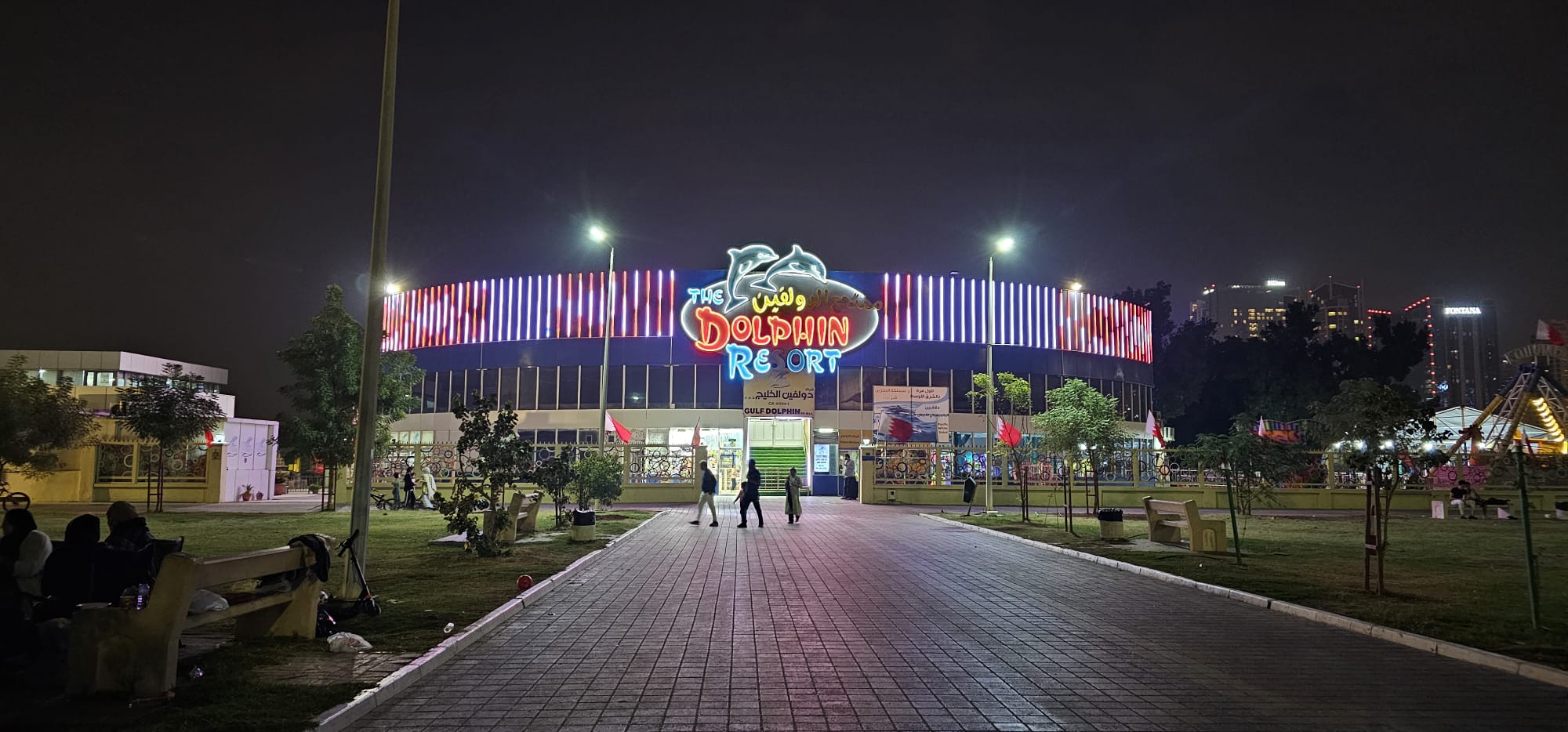
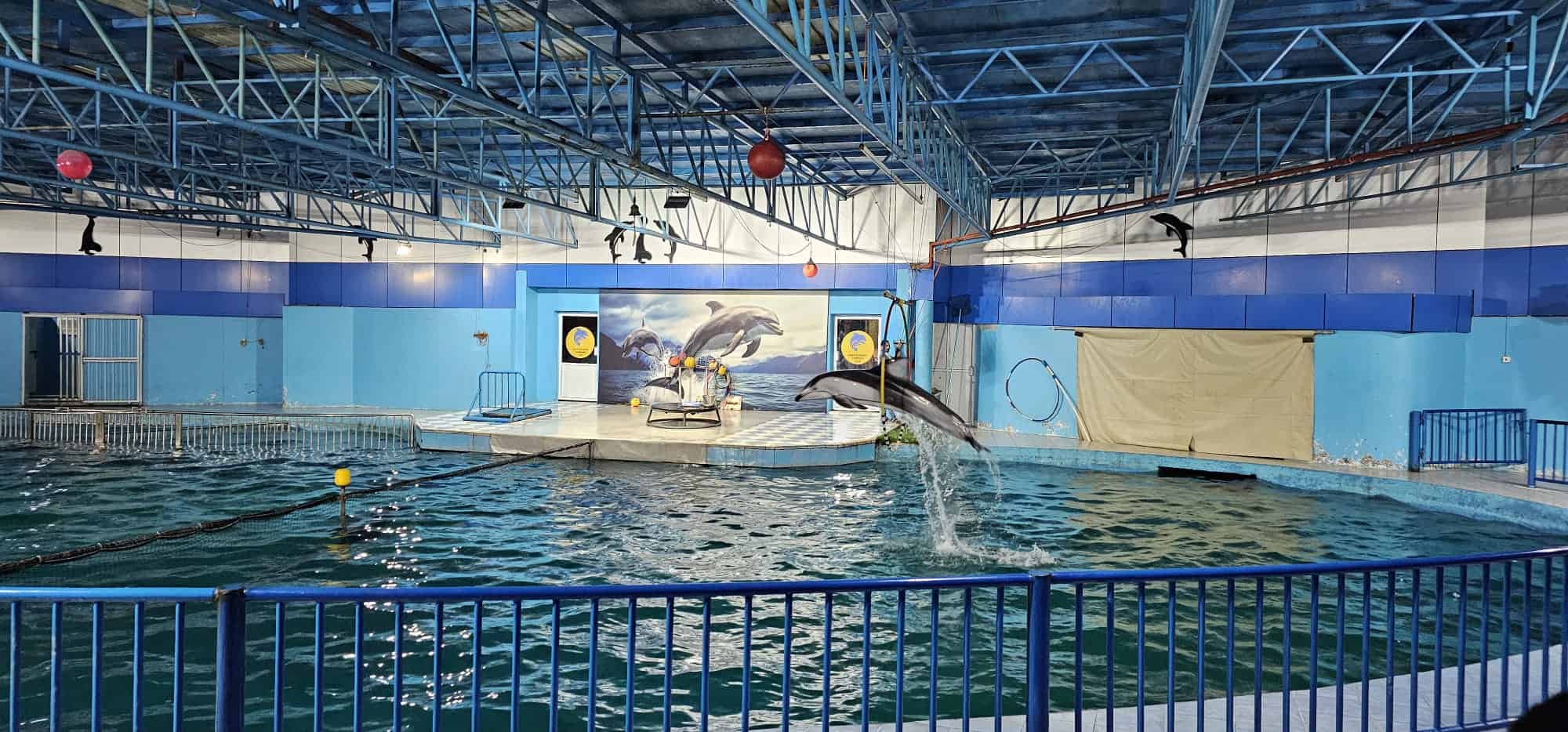
Al-Khamis mosque
The first mosque reportedly built during the Umayyad period, around 692, under the Caliph Umar II. The structure had over time fell into disrepair, to the point that it had lost all it’s walls and roof. However, restoration work is underway to bring it back to life, including its’ minarets that were added to the original structure in the 11th and 14th centuries.
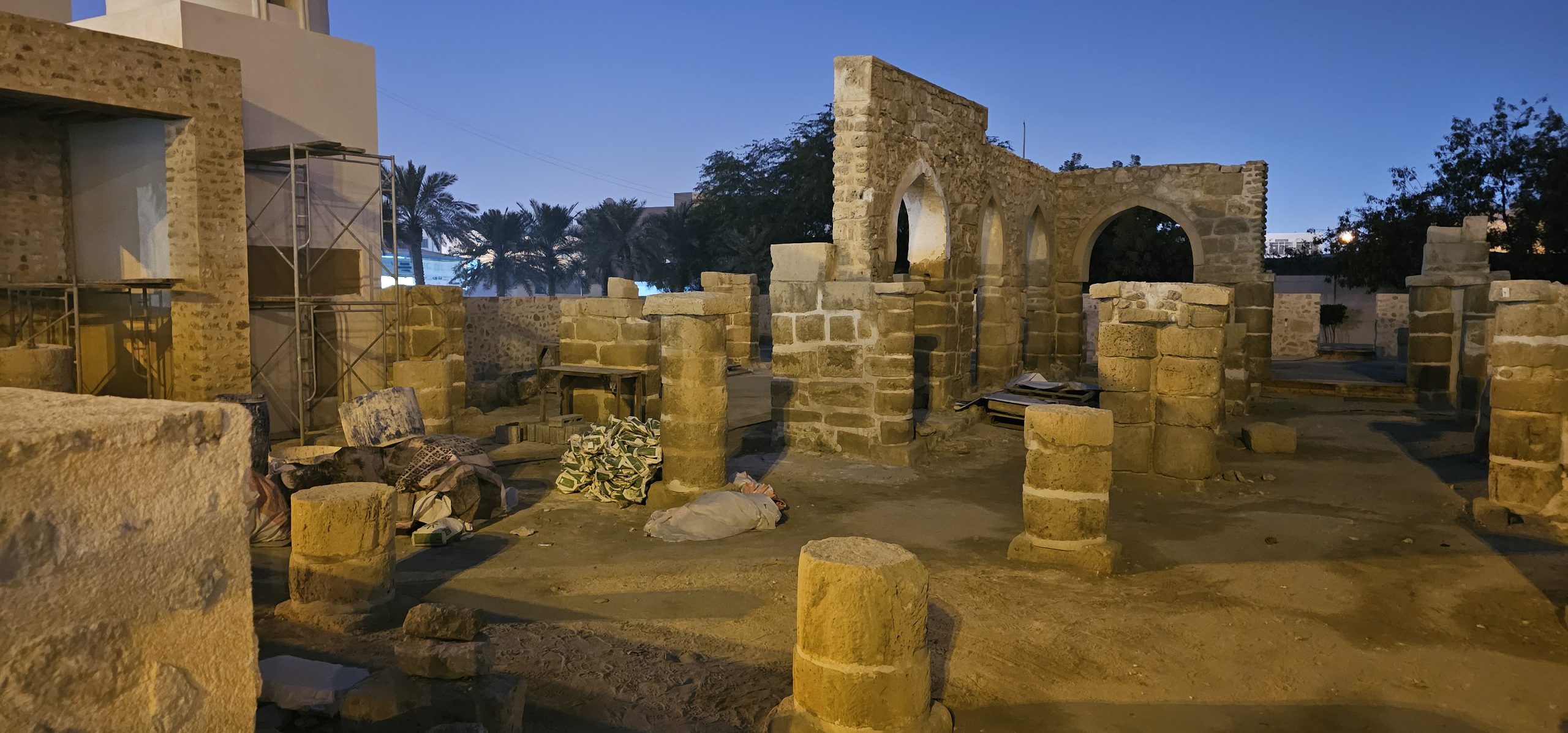
Bahrain postal museum
This was a small museum abut Bahrain’s postal service. Fascinating to learn of the strong historical links between Bahrain’s postal service with Britain and Pakistan. After India’s independence in 1947, Bahrain’s postal operations were managed by a postal agency in Karachi, Pakistan, until 1948, when the British took over. During this period, overprinted Indian stamps were replaced with British stamps, marking the transition of postal supervision from Pakistan to the British postal system.
Al-Fateh grand mosque
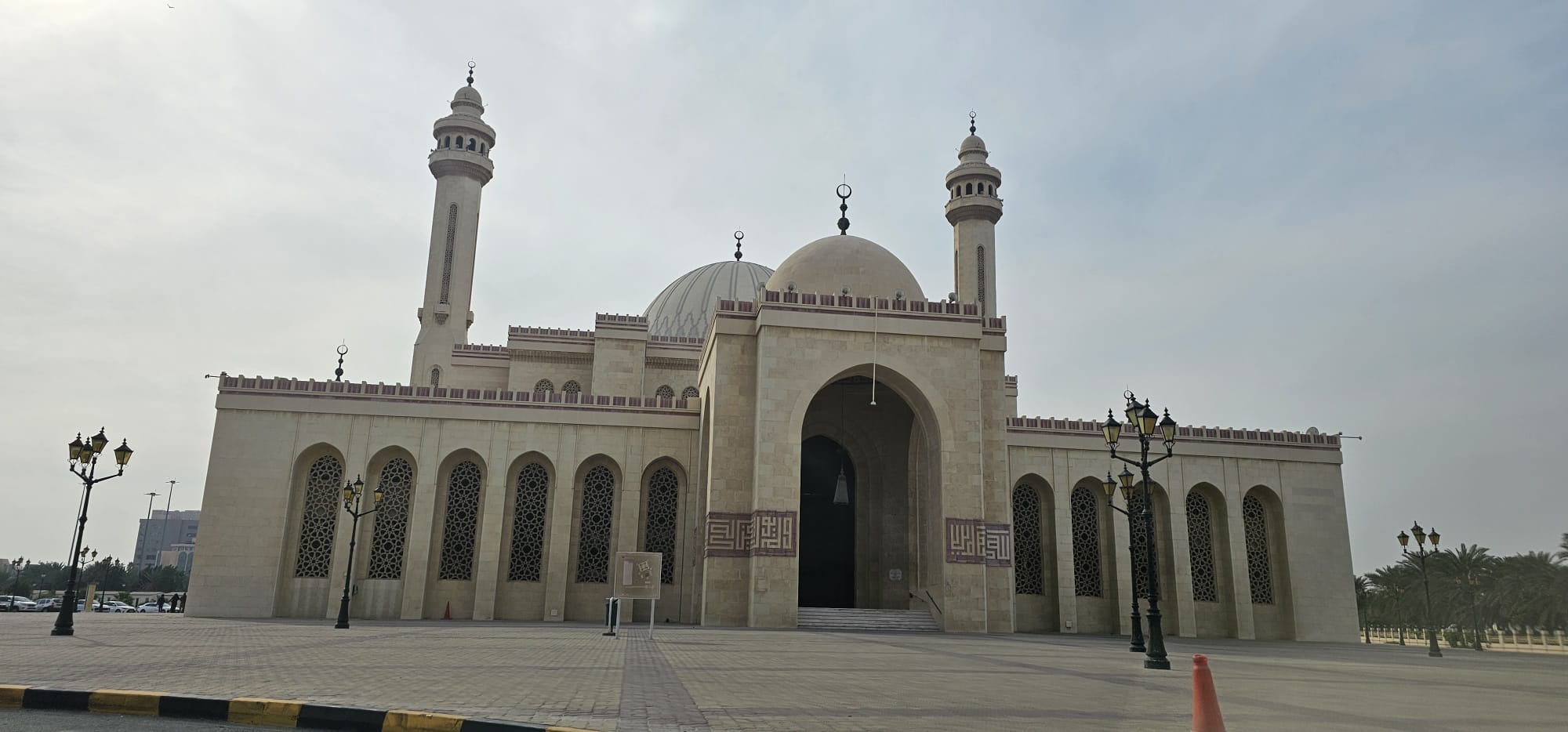
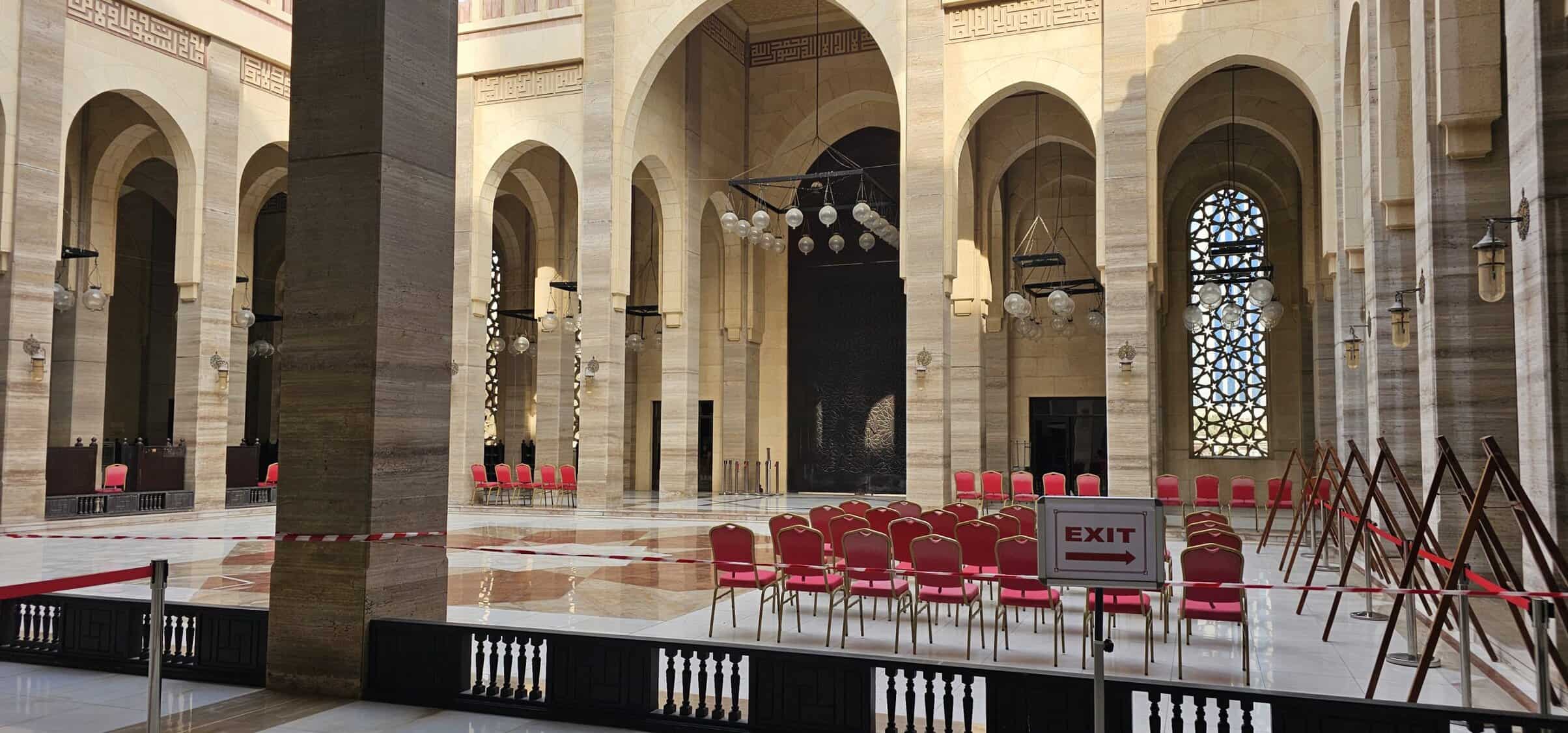
Bahrain Fort
Also known as “Qal’at al-Bahrain,” it is a UNESCO World Heritage Site located on the northwest coast of Bahrain, dating back to around 2300 BC. It has served various purposes over the centuries, including as a military stronghold, a royal residence, and a trading hub. The site also contains layers of history, with earlier structures from the Dilmun civilization (one of the ancient cultures of the region). There is a museum for the Dilmun civilisation next to the site.
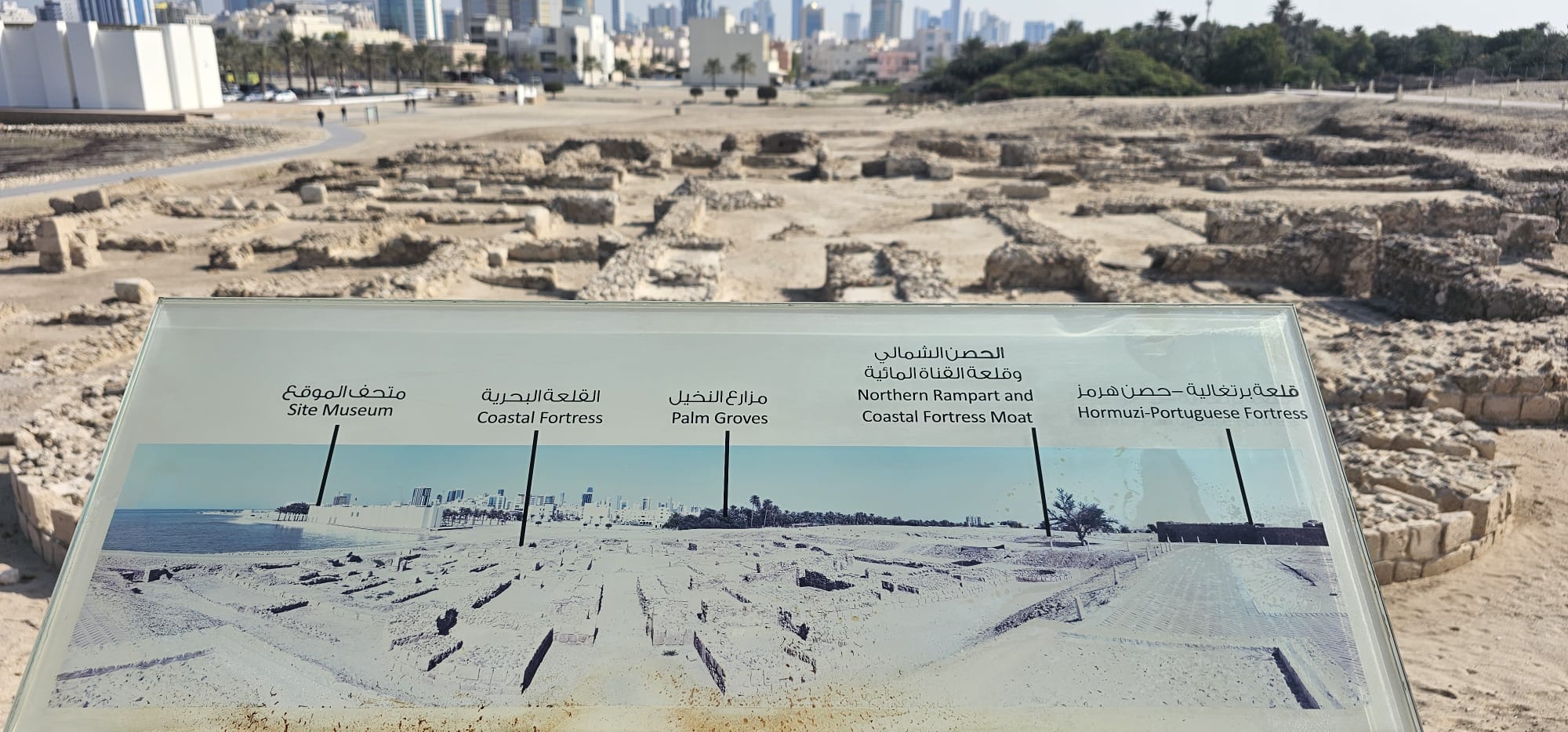
Durrat al-Bahrain
This is not a tourist attraction, and access is restricted. It is a group of artificial islands at the southern tip of Bahrain, for luxury island living and waterfront tourism. It is not as glamorous or well known as Dubai’s Palm Jumeirah.
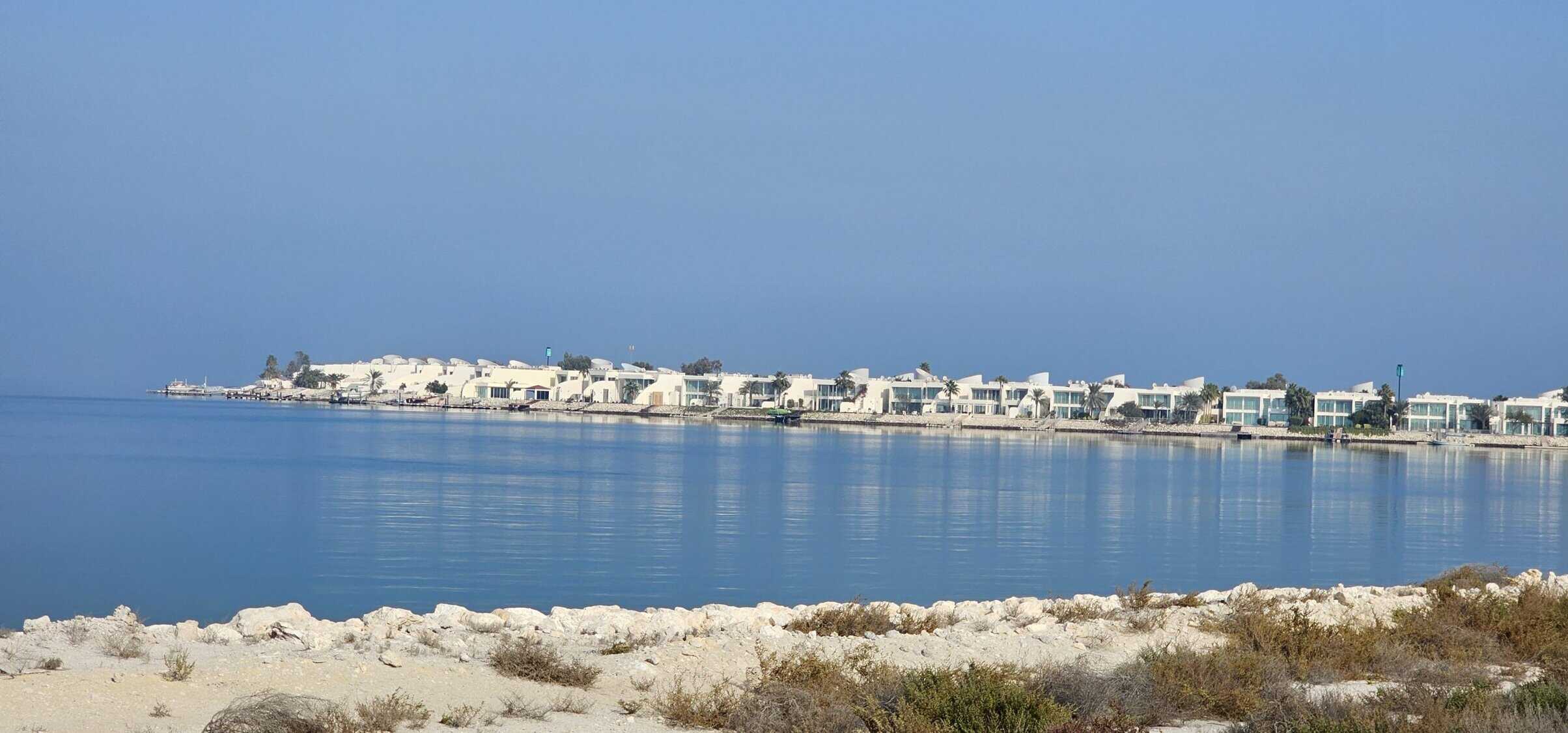
Muhammad bin Hassan Yusuf Mosque
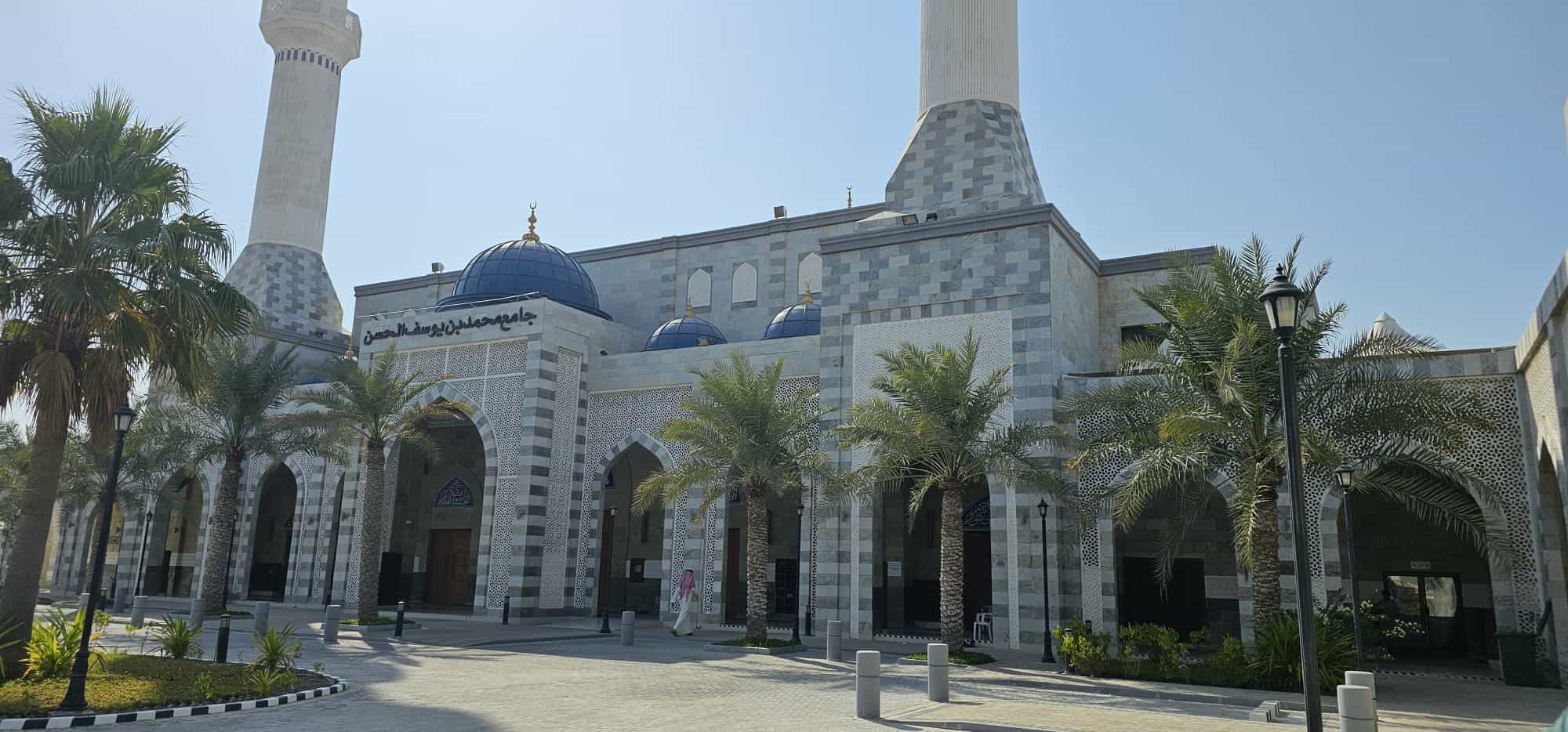
Bahrain F1 international circuit
We didn’t go inside the track, but we did stay around to see some incredible go cart racing next to the circuit.
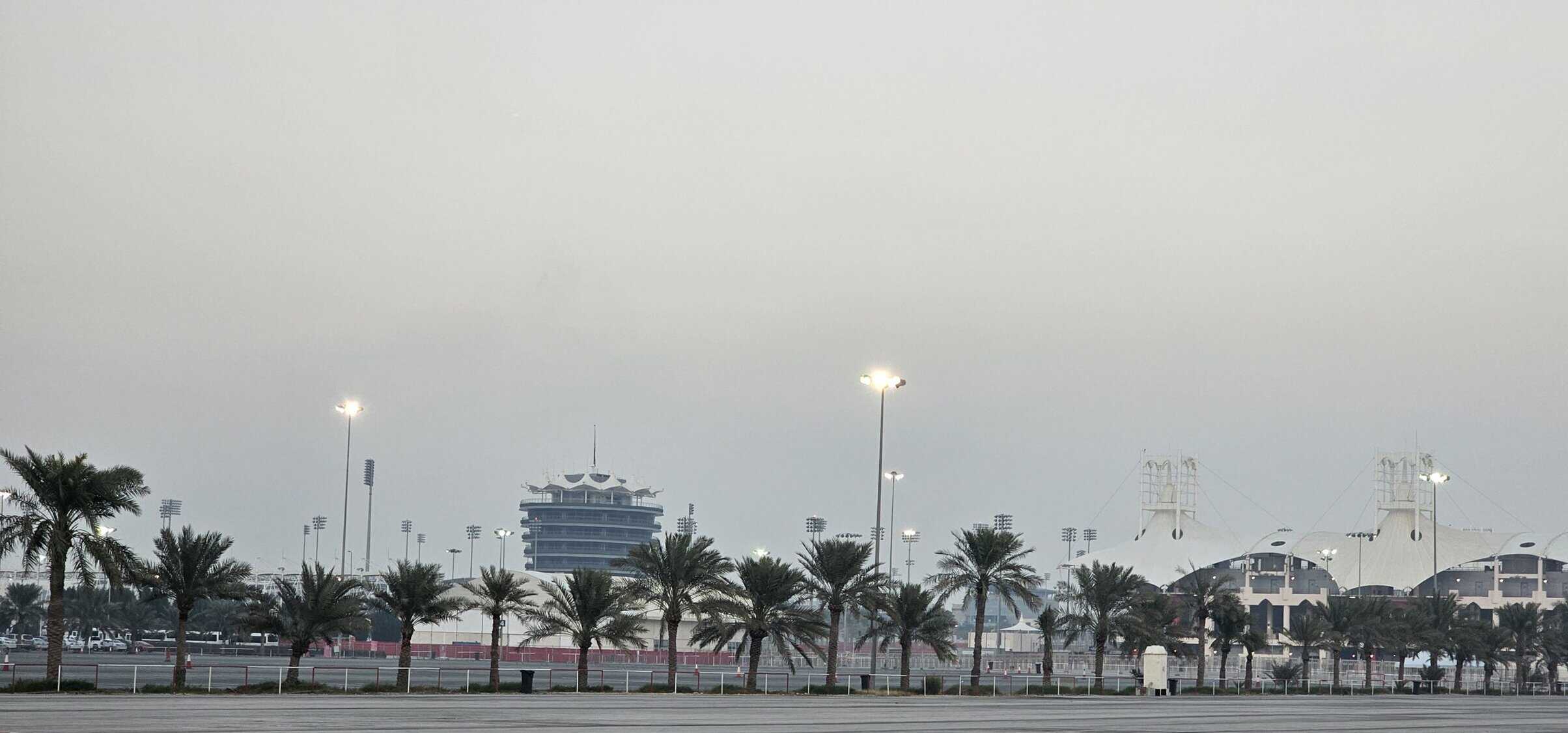
Souk Bab al-Bahrain
This is Bahrain’s’ historic marketplace. The entrance to it can be seen in the Gate of Bahrain building in the picture below. Like Araba souks generally, it is a lively maze of alleyways filled with traditional shops, modern boutiques, and street vendors. You can find everything from spices and perfumes like saffron and Bahraini oud to handcrafted gold, pearls, silver jewellery, luxurious textiles, Islamic calligraphy and so on.
